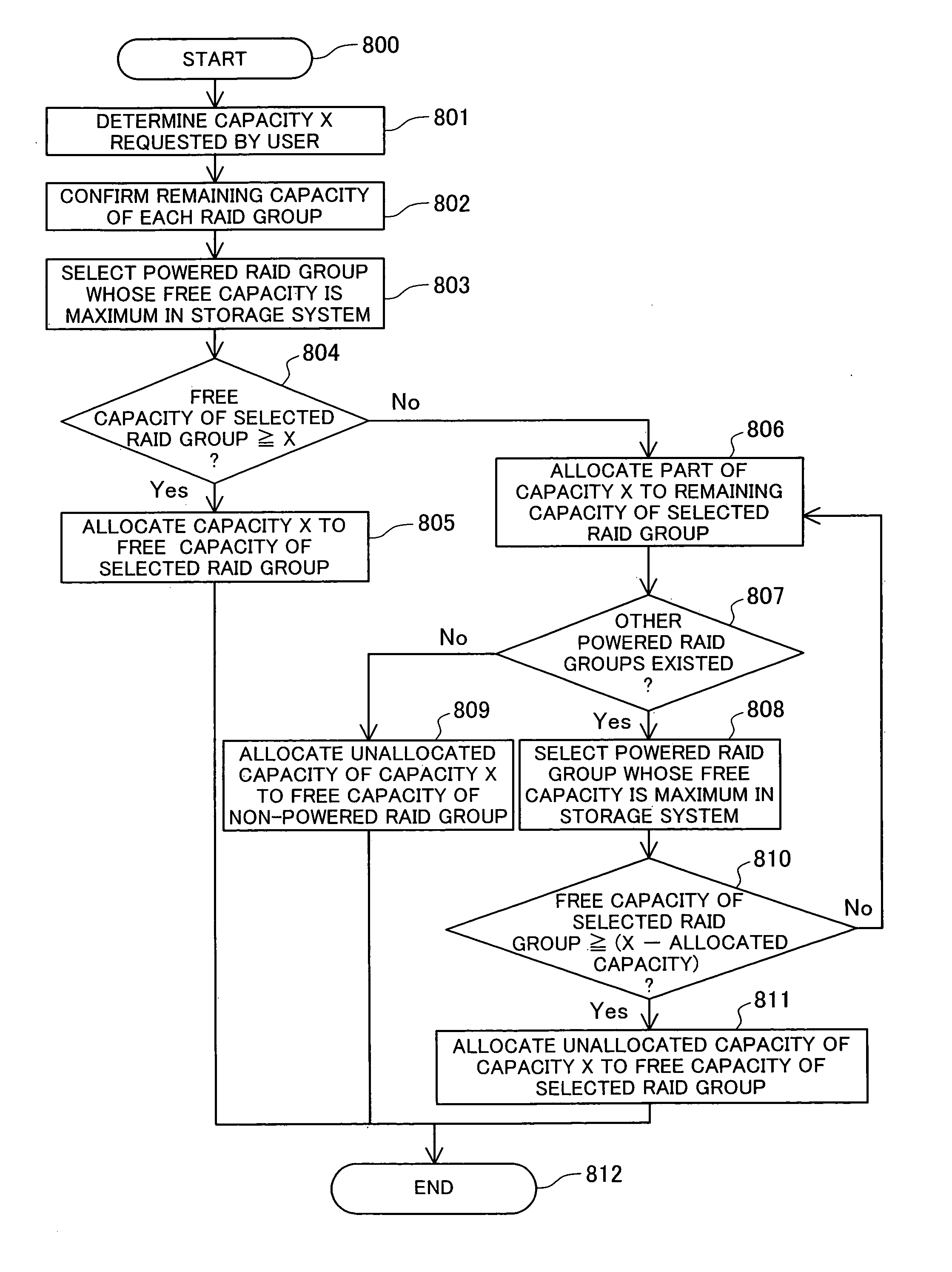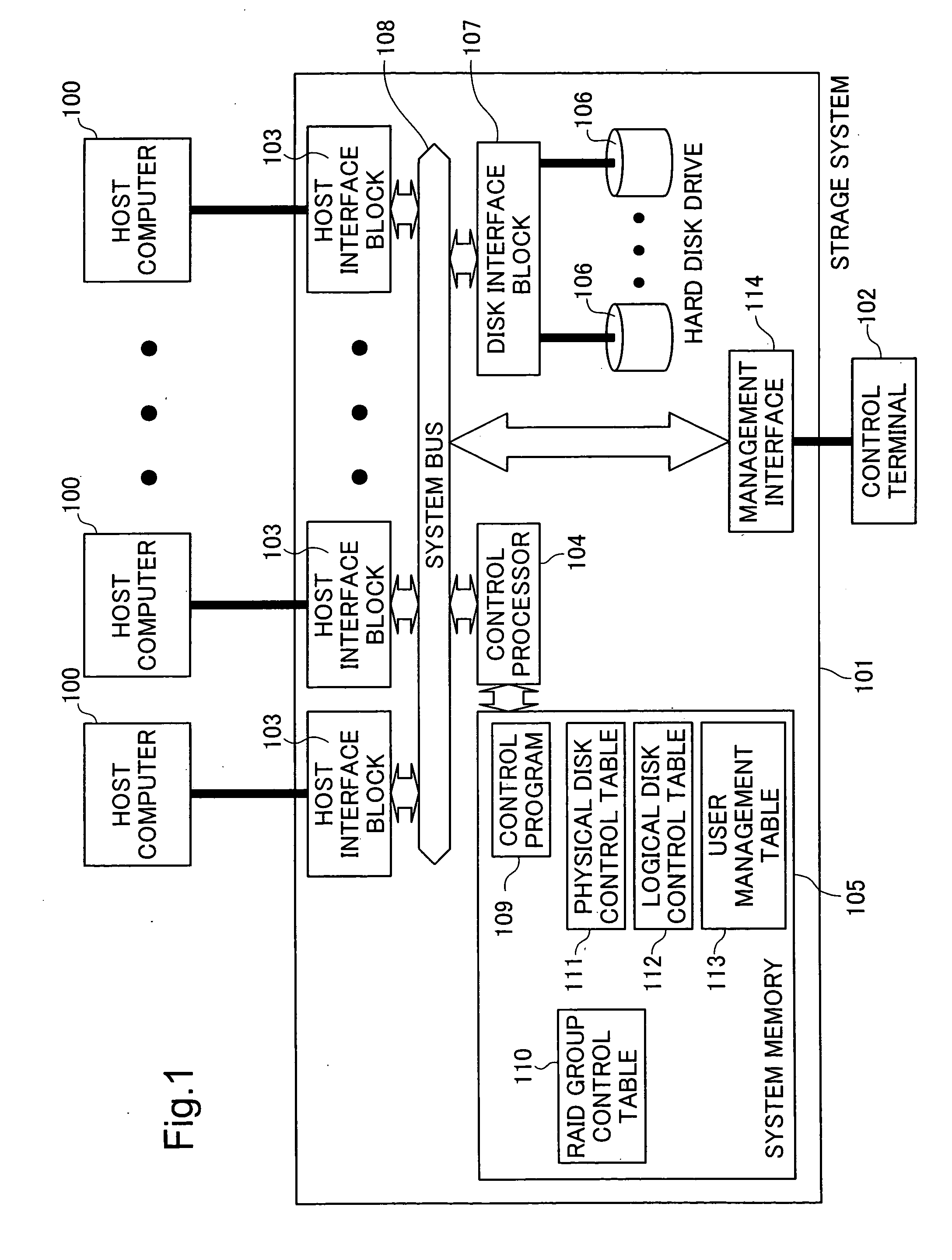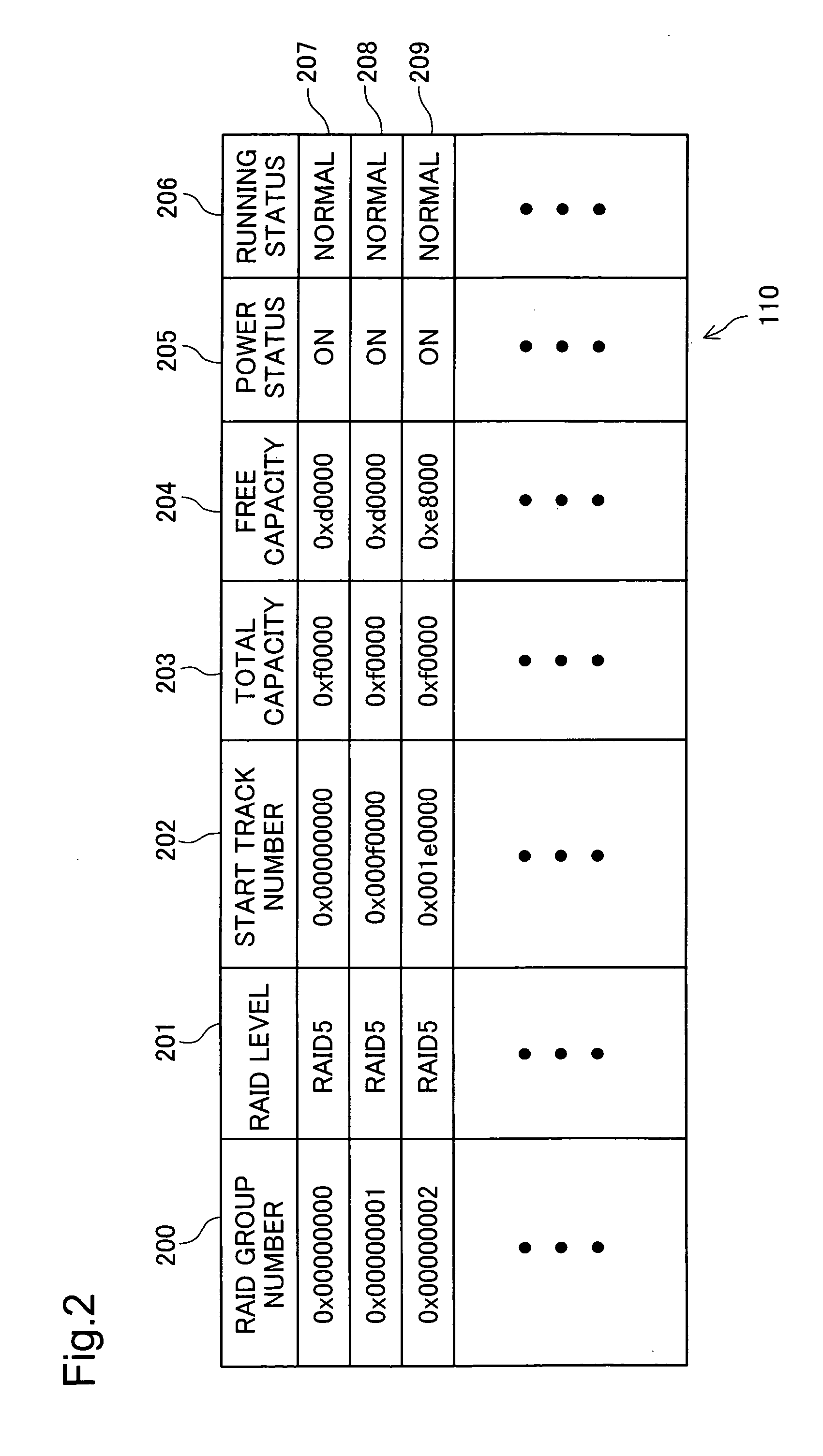Storage system and capacity allocation method therefor
a storage system and capacity allocation technology, applied in memory systems, sustainable buildings, instruments, etc., can solve the problems of insufficient original storage capacity of the storage system bought by the user, increased power consumption of hard disk drives, and increased power consumption of storage systems that implement on-demand services. the effect of reducing the power consumption of the storage system
- Summary
- Abstract
- Description
- Claims
- Application Information
AI Technical Summary
Benefits of technology
Problems solved by technology
Method used
Image
Examples
first embodiment
[0033]FIG. 1 is a block diagram showing the hardware configuration of a computer system of a first embodiment. This computer system comprises a plurality of host computers 100, a storage system 101 and a control terminal 102 used by an administrator to operate the storage system 101. The storage system 101 comprises a plurality of host interfaces block 103 that controls communication with the host computer 100, a management interface 114 that controls communication with the control terminal 102, a control processor 104 that controls the storage system as a whole, a system memory 105 that stores control programs executed by the control processor 104 to control the storage system, hard disk drives 106 that store data, a disk interface block 107 that carries out control of the hard disk drives 106 and communication with the hard disk drives 106, and a system bus 108 that connects the host interface block 103, control processor 104, disk interface block 107 and management interface 114 ...
second embodiment
[0096] In the first embodiment, it is assumed that when a logical disk is allocated to a user, the user starts off using the total capacity of that logical disk. In other words, it is assumed that the physical disk(s) corresponding to the logical disk allocated to the user are powered.
[0097] However, it does not necessarily mean that the user who is allocated a logical disk immediately begin using the entire capacity of the physical disk(s) corresponding to the allocated logical disk. It is expected that actual usage will resemble the situation shown in FIG. 12.
[0098]FIG. 12 shows the changes in the capacity of the storage system used by the user over time. The vertical axis 1200 represents the storage capacity used by the user, while the horizontal axis 1201 represents time. The stepped line 1202 in FIG. 12 represents the capacity of the logical disk allocated to the user. The curved line 1203 represents, out of the total capacity allocated to the user, the actually used capacity...
PUM
 Login to View More
Login to View More Abstract
Description
Claims
Application Information
 Login to View More
Login to View More - R&D
- Intellectual Property
- Life Sciences
- Materials
- Tech Scout
- Unparalleled Data Quality
- Higher Quality Content
- 60% Fewer Hallucinations
Browse by: Latest US Patents, China's latest patents, Technical Efficacy Thesaurus, Application Domain, Technology Topic, Popular Technical Reports.
© 2025 PatSnap. All rights reserved.Legal|Privacy policy|Modern Slavery Act Transparency Statement|Sitemap|About US| Contact US: help@patsnap.com



